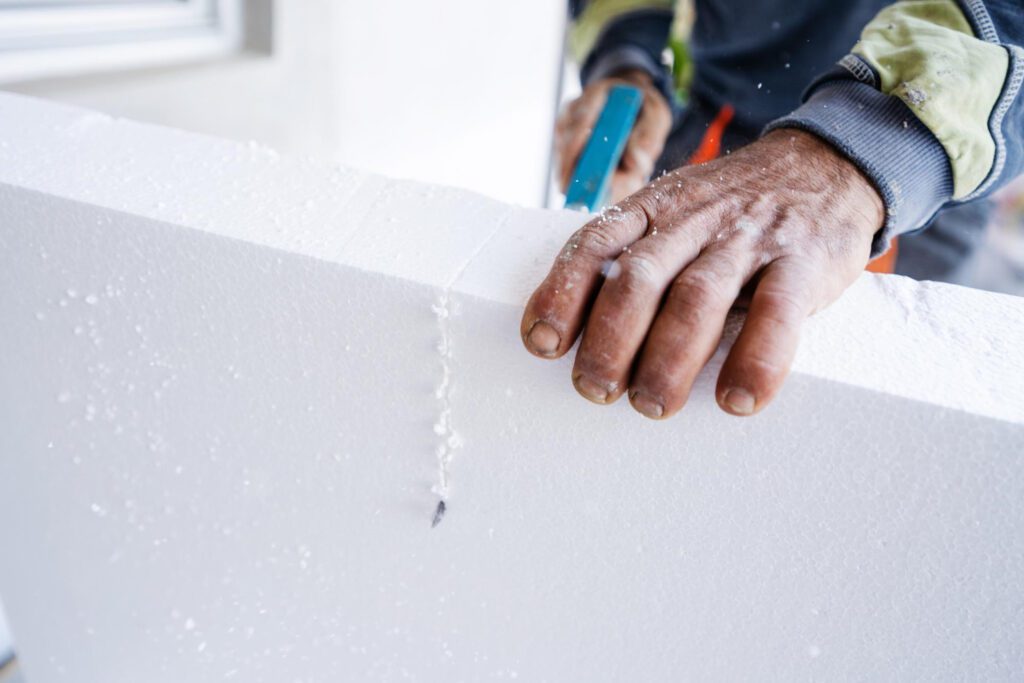
Deep Energy Retrofit Essentials: Sealing the Building Envelope with Rigid Foam Insulation
As sustainable building practices become more mainstream, deep energy retrofits are gaining popularity for their ability to dramatically improve home energy efficiency. A key component of these retrofits is sealing the building envelope to minimize heat transfer and energy loss. This involves using high-performance materials like rigid foam insulation, which not only improves energy efficiency but also contributes to a more sustainable future.
At Green Insulation, we specialize in providing reclaimed rigid foam insulation to make deep retrofits both cost-effective and eco-friendly. Contact us today to learn more about how we can support your retrofit goals.
The Financial Dynamics of Deep Energy Retrofits
Deep energy retrofits require a significant upfront investment. They often involve materials like rigid foam insulation and labor-intensive processes such as installing continuous insulation or modifying the building envelope. However, these costs are balanced by substantial long-term savings. Homes with well-sealed envelopes use far less energy for heating and cooling, resulting in significantly lower utility bills.
Reclaimed rigid foam insulation can make deep energy retrofits more accessible by reducing material costs. At Green Insulation, we offer reclaimed polyiso, EPS, and XPS foam boards that deliver performance comparable to new materials but at a fraction of the cost. This approach not only saves money but also minimizes environmental impacts by reducing embedded carbon, avoiding new CFC production, and diverting usable materials from landfills.
Key Strategies for Sealing the Building Envelope
Sealing the building envelope is the cornerstone of an effective deep energy retrofit. Here are the critical strategies to consider:
Continuous Insulation
Applying rigid foam insulation continuously across the exterior of a building eliminates gaps that interrupt thermal protection. This approach creates a uniform barrier that prevents heat transfer, significantly improving the home’s energy efficiency. Continuous insulation also helps reduce energy losses caused by structural components like studs, which act as thermal bridges.
Air Sealing
Air leaks are a major contributor to energy loss. Rigid foam insulation, when properly installed, serves as an effective air barrier, preventing drafts and moisture infiltration. This not only enhances comfort but also protects the building’s structural integrity by reducing the risk of condensation-related damage.
Eliminating Thermal Bridging
Thermal bridging occurs when conductive materials, such as wood or metal studs, allow heat to bypass insulation. Rigid foam insulation applied as a continuous layer over framing components acts as a thermal break, reducing heat loss and improving overall performance.
Pros and Cons of a Deeper Retrofit
Deep energy retrofits offer numerous advantages, but they also come with challenges that homeowners should consider:
Pros:
- Energy Efficiency: Significant reductions in heating and cooling costs.
- Improved Comfort: Elimination of drafts and more stable indoor temperatures.
- Durability: Better protection against moisture and condensation, increasing the building’s lifespan.
Cons:
- Upfront Costs: Higher material and labor expenses.
- Structural Adjustments: Deeper insulation layers may require modifications to windows and doors, increasing complexity.
- Aesthetic Considerations: Changes to siding depth and appearance may require additional design planning.
Choosing the Right Rigid Foam Insulation: XPS vs. EPS vs. Polyiso
The choice of rigid foam insulation depends on the specific requirements of your retrofit:
- Extruded Polystyrene (XPS):
- Pros: High compressive strength, excellent moisture resistance, consistent R-value.
- Cons: Slightly higher cost and greater environmental impact.
- Expanded Polystyrene (EPS):
- Pros: Cost-effective, good moisture resistance, environmentally friendly production.
- Cons: Slightly lower R-value per inch compared to XPS and polyiso.
- Polyisocyanurate (Polyiso):
- Pros: Highest R-value per inch, ideal for space-constrained applications.
- Cons: Performance can degrade in very cold temperatures, higher upfront cost.
Reclaimed insulation offers a cost-effective way to access these materials, combining excellent performance with significant environmental benefits.
Realizing Additional Benefits with Reclaimed Foam Insulation
Reclaimed rigid foam insulation amplifies the benefits of a deep retrofit by making it more affordable and sustainable. With materials sourced from Green Insulation, you can:
- Save Money: Reclaimed foam panels are significantly less expensive than new materials.
- Reduce Environmental Impact: Lower embedded carbon costs and avoid creating new waste.
- Achieve Comparable Performance: Reclaimed materials maintain the same thermal efficiency and durability as new ones.
Practical Tips for a Successful Deep Energy Retrofit
- Plan Ahead: Evaluate your home’s energy performance and identify areas with the greatest potential for improvement.
- Focus on High-Impact Areas: Prioritize retrofitting exterior walls, roofs, and foundations where energy loss is highest.
- Partner with Experts: Consult experienced professionals to ensure your retrofit is both effective and compliant with building codes.
- Source Reclaimed Materials: Reduce costs and environmental impact by choosing reclaimed foam insulation from Green Insulation.
Embrace Deep Retrofits with Reclaimed Rigid Foam Insulation
Sealing your building envelope with rigid foam insulation is essential for achieving deep energy savings. While a deep retrofit involves higher upfront costs, the long-term benefits—lower energy bills, enhanced comfort, and environmental responsibility—make it a worthwhile investment.
Ready to start your deep energy retrofit? Contact Green Insulation today to explore our selection of reclaimed rigid foam insulation, including XPS, EPS, and polyiso. Together, we can build a more energy-efficient and sustainable future.
